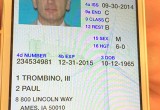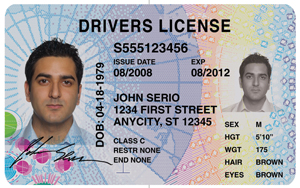Are states speeding toward mobile driver licenses?
Interest is high, but Roadblocks include standards, infrastructure, relying party acceptance
25 April, 2016
category: Biometrics, Contactless, Digital ID, Government, NFC
The ubiquitous plastic card that resides in the wallets of most people 16 years of age and older may be in for a makeover, and this one could entail more than a new hologram.
States across the country are considering the issuance of driver licenses on mobile devices. In most states, this mobile driver license would be in addition to the cards that people already carry in their wallets, but what might the future bring?
The driver license is supposed to be nothing more than proof that the cardholder can operate a motor vehicle, but it has become so much more – facilitating everything from air transportation to alcohol purchases and financial account opening.
There are many reasons states are looking at mobile driver licenses. One school of thought is that the younger generation is fed up with carrying pieces of plastic, purses and wallets, preferring instead to do everything with a mobile device.
Others point to efficiencies as the primary reason. A mobile credential and app gives driver license issuers an easier way to communicate with customers. It can also enable customers to perform self-service tasks, such as address changes or license renewals, all through an app instead of visiting a physical location.
Privacy is another often-cited benefit. Instead of having to show a stranger a card with a home address and date of birth to buy a six-pack, an app could simply confirm that the customer is at or beyond the authorized age without giving up extra personal data.
Lastly, there may be a larger role for a mobile driver license to play with digital identity. Driver licenses are one of the few pieces of identification where individuals actually go somewhere, provide documentation to prove identity and have that data verified. Being able to use that high-assurance identity coupled with multi-factor authentication in the digital world could be the solution to some of the digital identity woes currently plaguing enterprises.
But doing mobile driver licenses the right way will require more than just placing an image of the card on a device. States will need to overcome numerous challenges before securely placing an identity on a mobile phone. Standards have to be developed so that licenses issued in one state can be accepted in all others, and a vast infrastructure will be needed to electronically verify mobile IDs.
Iowa out ahead of the pack
Iowa started its pilot of mobile driver licenses with a dozen employees in August 2015 and has since expanded its test to more than 60 license holders, says Mark Lowe, director of Iowa Department of Transportation’s Motor Vehicle Division.
Participants download an app after receiving an email inviting them to enroll. After entering the email address and PIN, the user takes a selfie, which is checked against the previously enrolled image at the DMV. If the facial recognition passes, they can then create the mobile driver license.
The pilot is testing updates to the customer record system with changes rendered to the handset in real-time. Information such as change of address, over/under 21-years-old status, organ donor status and change in driving status, endorsements, or restrictions, can all be updated to the mobile driver license immediately. As an example, when an individual turns 21 the mobile version of the document switches from the vertically printed format to horizontal in the same way that the physical card would change upon reissue.
The mobile driver license software carries the same level of trust as the physical driver license ID card and includes both visible and covert security features that are layered in the digital image displayed on screen. These features are designed to enable the mobile drive license to be quickly and reliably authenticated when presented for identification purposes and protect against fraudulent reproduction.
In addition to PIN and fingerprint-based security features already built into phones used in the pilot, the mobile driver license app can also be secured using facial recognition technology. This requires the user to take a selfie and input a custom PIN prior to launch.
Mobile licenses can improve privacy, allowing citizens to choose when and with whom they share their information, and as importantly, how much information they share.
In the future Bluetooth or NFC could be added to share information with law enforcement or others, Lowe says. Instead of having to hand the device to the officer, the mobile could wirelessly transmit information to the officer’s handset. Another scenario would see the officer using his own mobile device to scan a bar code on the citizen’s device, in order to access the individual’s driving record.
The second stage of the pilot is testing this capability outside of law enforcement. Iowa is working with a group of local retailers to explore how license information can be electronically presented and validated. One scenario involves a retailer scanning a bar code from the license app to validate that the ID holder is over a certain age, Lowe explains.
Later this year, the Iowa pilot is likely to expand to a test group outside the transportation department.




